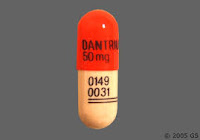In a first-of-its-kind study, FDA-Approved Dantrolene, a muscle relaxant, was delivered through the nose to Alzheimer’s lab animals. It eased their Alzheimer’s by providing therapeutic effects on memory and cognition.
At the Alzheimer’s Association International Conference, a proof-of-concept preclinical study conducted at Penn, with Eagle’s participation, documented that intranasal administration of dantrolene sodium provided therapeutic effects on memory and cognition in a mouse model of Alzheimer’s.
“We are encouraged by the preliminary work we have done together and the potential of dantrolene as a first-in-class treatment option for this devastating disease,” said Huafeng Wei, MD, Ph.D., Associate Professor of the Department of Anesthesiology and Critical Care and Principal Investigator for the animal studies at University of Pennsylvania.
Real Progress Wins Agreement to Fund Additional Research
Eagle Pharmaceuticals, Inc. (“Eagle”) announced that Eagle and the University of Pennsylvania (“Penn”) have agreed on terms of a new exclusive worldwide license agreement for the development of dantrolene sodium for the potential treatment of people living with Alzheimer’s disease, including an agreement to fund additional research and provisions regarding commercialization of products developed under the license.
“We are encouraged by the preliminary work we have done together and the potential of dantrolene as a first-in-class treatment option for this devastating disease”
“Our collaboration with University of Pennsylvania builds on Eagle’s strategy to develop and commercialize therapies for critical care and disorders that have significant unmet patient needs, such as Alzheimer’s disease, the most common form of dementia,” stated Scott Tarriff, Chief Executive Officer of Eagle Pharmaceuticals. “Dantrolene sodium’s potential for use in treating Alzheimer’s patients represents novel thinking backed by years of proprietary Eagle research. Pre-clinical work around this has proven positive thus far and builds on Eagle’s years of insight gained in multiple clinical and pre-clinical studies on dantrolene sodium.”
Restoring Calcium Regulation
Eagle’s proprietary research continues to yield insights into how dantrolene sodium plays a role in restoring intracellular calcium regulation. Eagle believes that the homeostatic balance of calcium inside cells is essential for the proper function of the nervous system. Eagle’s extensive experience with dantrolene suggests that changes in intracellular calcium levels or calcium signaling, which involve complex cellular pathways, may be involved in neurological pathologies and may lead to neurodegeneration and neuron death.
The most recent study, Intranasal Dantrolene as a Disease-Modifying Drug in Alzheimer, evaluated plasma and brain dantrolene concentrations, effectiveness, and safety when dantrolene sodium was given in doses of five milligrams per kilogram three times a week either intranasally or as a subcutaneous injection. The study also compared dosing when started early, before Alzheimer’s disease symptoms develop, versus later, after onset of Alzheimer’s disease symptoms. Intranasal and subcutaneous dantrolene sodium administration each significantly improved hippocampal-dependent and -independent memory in the early treatment group, but only intranasal dantrolene improved cognition in the late treatment group.
Intranasal – Through the Nose – is Better than High Doses
Delivering the medication dantrolene through the nose rather than the mouth may help the medication penetrate the brain more effectively, potentially maximizing its therapeutic benefits in the treatment of neurodegenerative diseases, like Alzheimer’s disease. In this first-of-its-kind study, researchers in the Perelman School of Medicine (PSOM) at the University of Pennsylvania showed that administering dantrolene through the nose increased its brain concentration and duration in a mouse model of Alzheimer’s disease without causing obvious adverse side effects. Those results were published in PLOS ONE.
The findings represent a major step forward in addressing a question about the potential use of dantrolene—which is often used to treat patients with muscle spasms—in the treatment of neurodegenerative diseases. Although research has shown dantrolene can inhibit or slow the progression of many neurodegenerative diseases in animal models, the medication—when given orally or intravenously—only has limited penetration into the central nervous system, hampering its effectiveness and viability as a long-term treatment option.
“We know the use of dantrolene in the treatment of Alzheimer’s disease or stroke would require chronic administration,” said the study’s corresponding author Huafeng Wei, MD, PhD, an associate professor of Anesthesiology and Critical Care at Penn. “Rather than using high doses of the oral form, which could increase the risk of adverse side effects, we sought to test the effectiveness of the intranasal approach via pre-clinical studies in mice.”
Huntington’s, ALS & Stroke Benefits
In the United States, about 5.8 million people are living with Alzheimer’s disease, a degenerative brain disease and the sixth leading cause of death in the nation. Previous studies involving cell and animal models have found that dantrolene can improve mental function and provide other therapeutic benefits in the treatment of Alzheimer’s, as well as other neurodegenerative diseases, such as Huntington’s disease, Amyotrophic Lateral Sclerosis (ALS), and stroke.
In this study, the Penn team examined two groups of mice—one group received the oral form of the medication, while the other received the intranasal form—to identify whether delivering dantrolene via the nose would yield increased penetration into the brain. Researchers measured the concentration of dantrolene in the brain and blood at the eight intervals: 10, 20, 30, 50, 70, 120, 150 and 180 minutes following administration. Additionally, the team gave separate groups of mice the intranasal form of dantrolene three times a week for either three weeks or four months to identify any potential adverse side effects associated with chronic use.
Brain Gets More Medicine for More Time
Researchers found mice who received dantrolene through the nose had a much higher concentration of the medication in their brain—for a much longer period of time—compared to mice who received the oral form. In fact, the medication was still in their brain at the 180-minute mark, whereas there was no trace of the medication at the 120-minute mark in mice that received the medication orally. Chronic use of the medication did not appear to impair motor function or the ability to smell. However, researchers note additional studies are needed to compare the side effects and toxicity of the different methods.
The findings build on results from an earlier proof-of-concept study, conducted at Penn, that Wei presented at the 2019 Alzheimer’s Association International Conference. That study showed that intranasal dantrolene treatment in mice provided better therapeutic effects on cognition and memory loss than administering the medication subcutaneously. Researchers found the intranasal approach was particularly more effective in mice who had already experienced the onset of Alzheimer’s disease-like symptoms.
New Therapeutic Approach
“While more research in animal models is needed to further evaluate the safety and effectiveness of this approach, our hope is that this will ultimately lead to a new therapeutic approach that can be studied in patients with various neurodegenerative diseases, including Alzheimer’s,” Wei said.
REFERENCE:
- Shi Y, Zhang L, Gao X, et al. Intranasal Dantrolene as a Disease-Modifying Drug in Alzheimer 5XFAD Mice [published online ahead of print, 2020 Jun 27]. J Alzheimers Dis. 2020;10.3233/JAD-200227. doi:10.3233/JAD-200227.
SOURCES:
- Penn Medicine News
- Eagle Pharmaceuticals, Inc. – Eagle is a fully integrated pharmaceutical company with research and development, clinical, manufacturing and commercial expertise.











